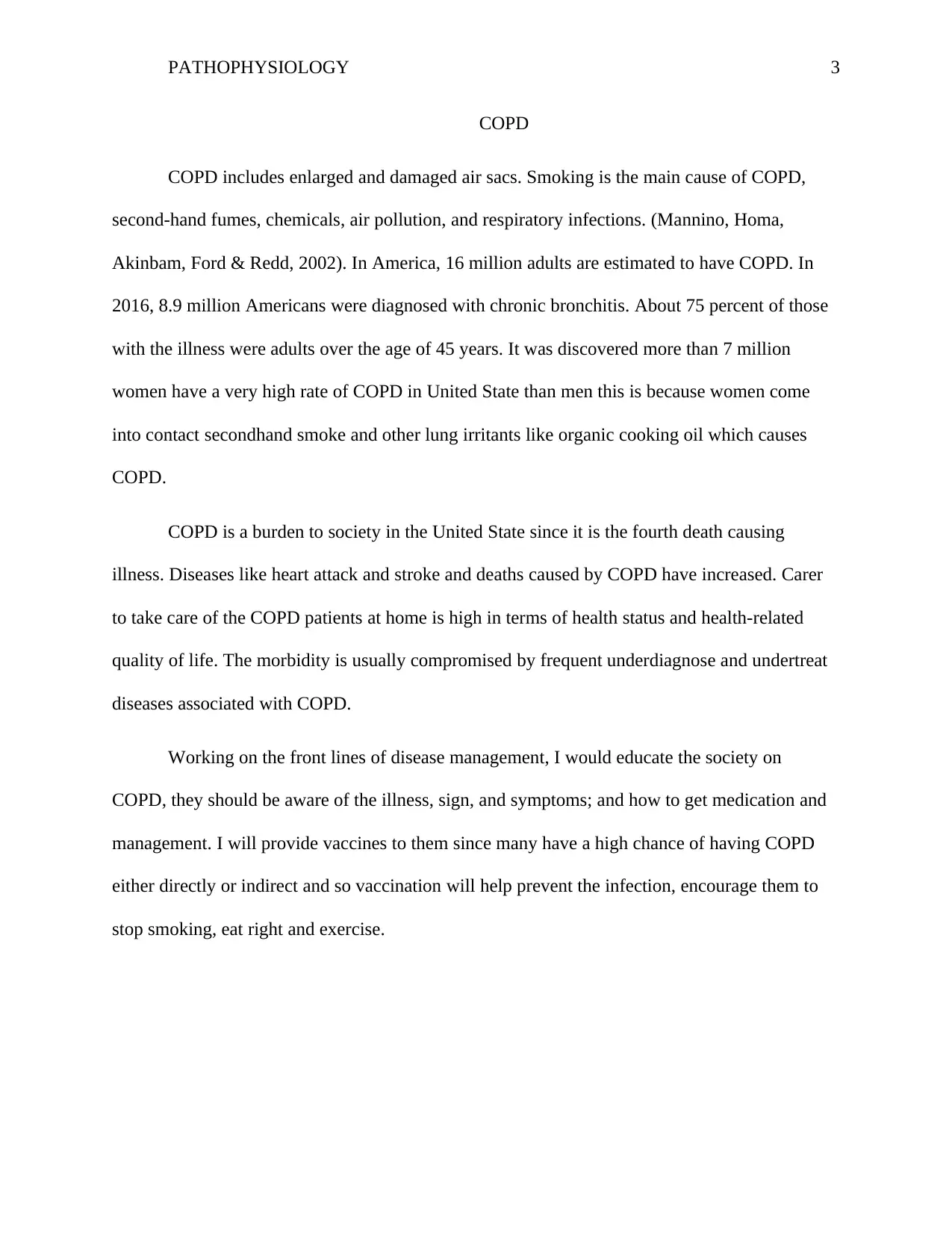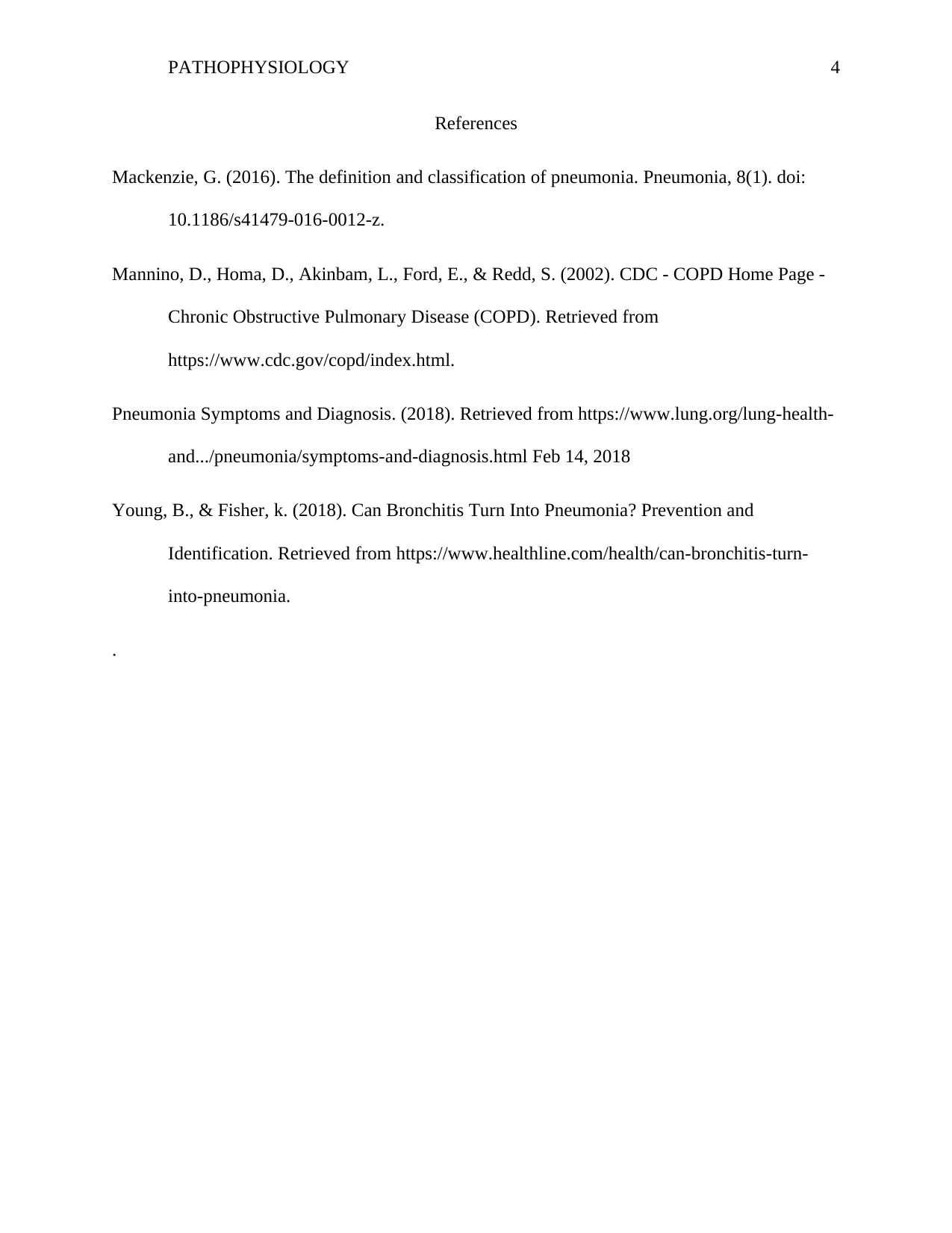Pathophysiology Case Study: Pneumonia in an 82-Year-Old Patient
VerifiedAdded on 2023/03/30
|4
|598
|282
Case Study
AI Summary
This case study analyzes pneumonia in an 82-year-old female with a history of rheumatoid arthritis, coronary artery disease, chronic bronchitis, and hypertension. The patient, residing in a skilled nursing facility, presents with symptoms indicative of pneumonia, including fever, confusion, and rust-colored sputum. The analysis explores the probable classification of pneumonia, considering the patient's comorbidities and smoking history. It also discusses diagnostic tests, such as pleural fluid culture and pulse oximetry, to assess the patient's condition. Furthermore, the study touches on COPD, its causes, prevalence, and the importance of patient education and preventative measures like vaccination and smoking cessation. Desklib provides access to similar case studies and solved assignments for students.
1 out of 4











![[object Object]](/_next/static/media/star-bottom.7253800d.svg)